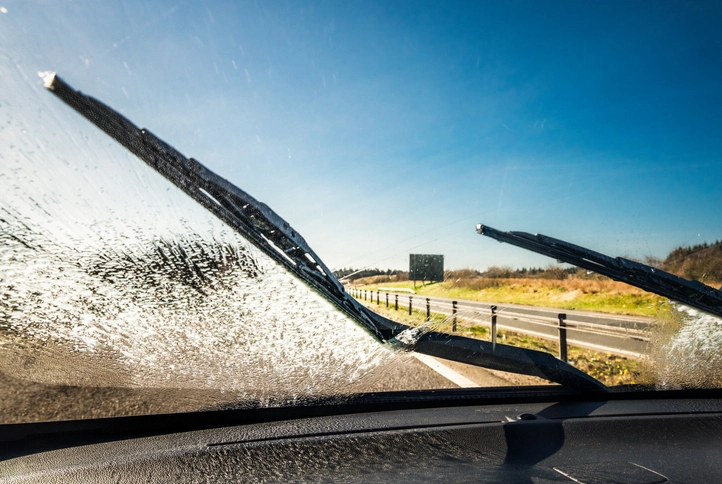Say Goodbye to Pitted Windshields | The Ultimate Protection
A pitted windshield refers to a glass surface that has sustained numerous small impacts, resulting in tiny chips and indentations. These impacts are typically caused by flying debris such as gravel, sand, or road salt hitting the windshield while driving. While pitting may seem like a minor inconvenience compared to larger cracks or chips, its cumulative effect can significantly impair visibility and compromise the structural integrity of the windshield over time. Addressing pitted windshield damage is crucial for several reasons. Firstly, pitting can obstruct the driver’s view, particularly when sunlight or headlights reflect off the tiny indentations, creating glare and reducing visibility.
What Causes Windshield Pitting
Environmental Factors
Exposure to Road Debris: Small stones, gravel, and other debris kicked up by vehicles on the road can impact windshields, causing pitting over time.
Weather Conditions (e.g., Hail, Sandstorms): Harsh weather elements like hail or sandstorms can lead to abrasions on the windshield, contributing to pitting.
Chemical Reactions:
Acid Rain: Acid rain contains pollutants such as sulfur dioxide and nitrogen oxides, which can corrode the glass surface over time, leading to pitting.
Pollution: Airborne pollutants can settle on the windshield and react with its surface, causing deterioration and pitting.
Impact Damage:
Rocks and Pebbles: Direct impacts from rocks, pebbles, or other solid objects can chip or pit the windshield.
Collision with Objects: Larger objects hitting the windshield, whether due to accidents or other incidents, can cause significant damage and pitting.
Other Contributing Factors:
Poor Maintenance Practices: Neglecting to clean the windshield regularly or using abrasive cleaning materials can exacerbate pitting.
Quality of Windshield Material: Lower quality or older windshields may be more susceptible to pitting compared to newer, higher quality materials.
Overall, a combination of these factors often contributes to windshield pitting, which can compromise visibility and necessitate windshield repair or replacement for safety reasons. Regular maintenance, careful driving, and protective measures can help minimize the risk of pitting and prolong the lifespan of windshields.
Signs and Symptoms of Pitted Windshields

Pitted windshields can be a nuisance and even a safety hazard if left unaddressed. Here’s a breakdown of the signs and symptoms, categorized as visual indicators, effects on visibility, and safety concerns:
Visual Indicators:
- Small, shallow indentations or pits on the surface of the windshield.
- Tiny, often circular marks that resemble small dents or chips.
- The surface of the windshield may appear uneven or textured, especially when viewed at certain angles.
- Pitting may be more pronounced in areas that are frequently exposed to debris, such as along the edges or in the line of travel.
Effects on Visibility:
- Glare from sunlight or headlights may be exacerbated by the uneven surface of the windshield, causing visibility issues, especially during dawn, dusk, or nighttime driving.
- Pits can refract light in unpredictable ways, leading to distorted vision through the windshield.
- In rainy conditions, water droplets may collect in the pits, further obstructing visibility and creating a distracting effect known as “starring.”
Safety Concerns:
- Reduced visibility increases the risk of accidents, particularly in low-light conditions or adverse weather.
- Pits can weaken the structural integrity of the windshield, making it more prone to cracking or shattering upon impact.
- Over time, untreated pitting can worsen, leading to more extensive damage that may necessitate windshield replacement.
- Pits may compromise the effectiveness of windshield wipers, as they can catch on the uneven surface, resulting in streaking or incomplete clearing of debris or water.
Pitted Windshield Repair by Professionals
Pitted windshield repair typically involves a professional assessment and subsequent procedures to restore the windshield’s clarity and integrity. Here’s a breakdown of the diagnostic procedures and cost considerations involved:
Diagnostic Procedures:
Visual Inspection: A technician will visually inspect the windshield to assess the extent of pitting. They’ll look for the size, depth, and density of pits to determine the appropriate repair method.
Testing for Structural Integrity: The technician may conduct tests to ensure that the pitting hasn’t compromised the structural integrity of the windshield. This is crucial for ensuring the safety of the vehicle’s occupants.
Identification of Repair Options: Based on the inspection results, the technician will identify suitable repair options. These may include filling the pits, polishing the surface, or in some cases, recommending windshield replacement if the damage is extensive.
Consultation: The technician will discuss the findings with the vehicle owner, explaining the recommended repair procedures, associated costs, and expected outcomes. This ensures transparency and allows the owner to make an informed decision.
Cost Considerations:
Extent of Damage: The cost of pitted windshield repair can vary depending on the extent of the damage. Minor pitting may be less expensive to repair compared to severe pitting that requires extensive work.
Repair Method: The chosen repair method will also influence the cost. Simple surface polishing may be less expensive than filling pits with a specialized resin or epoxy.
Labor Costs: Labor costs vary depending on the complexity of the repair and the rates charged by the repair shop or technician.
Materials: The cost of materials, such as resin or polishing compounds, will be factored into the total cost of the repair.
Additional Services: If additional services, such as windshield sealing or coating, are recommended or requested, they will incur extra costs.
Managing Windscreen Pitting
Assessing the Extent of Damage:
When assessing windscreen pitting, it’s crucial to determine the severity of the damage. Inspect the windshield under different lighting conditions to identify the extent of the pitting. Small pits may be superficial and only affect the outer layer of the glass, while larger pits could compromise the structural integrity of the windshield. Look for clusters of pits or cracks that could indicate areas prone to further damage.
Choosing Repair vs Replacement:
Once you’ve assessed the damage, decide whether repair or replacement is necessary. For minor pitting that hasn’t compromised the integrity of the windshield, repair may be sufficient. This typically involves filling in the pits with a specialized resin to restore visibility and prevent further damage. However, if the pitting is extensive or if there are cracks that impair visibility or compromise safety, replacement may be the safer option. Consult with a professional windshield repair technician to determine the best course of action based on the specific damage to your windshield.
Aftercare and Maintenance Tips:
After repairing or replacing the windshield, it’s important to take steps to prevent further pitting and maintain visibility:
- Avoid driving behind large trucks or vehicles that can kick up debris, which can cause pitting.
- Regularly clean your windshield with a soft cloth and a mild detergent to remove dirt, grime, and debris that can exacerbate pitting.
- Apply a windshield sealant or protective coating to help repel water, dirt, and debris and minimize future damage.
- Keep a safe following distance to reduce the risk of debris hitting your windshield.
- Promptly repair any chips or cracks to prevent them from spreading and causing further damage to the windshield.
Conclusion
Repairing a pitted windshield is crucial to prevent further damage and maintain optimal driving conditions. There are several methods for repairing pitted windshields, including polishing, filling with resin, or replacing the windshield entirely depending on the severity of the damage. It’s essential to address pitting promptly to avoid safety hazards and ensure clear visibility on the road. Regular maintenance and prompt repairs can prolong the lifespan of the windshield and contribute to overall road safety.
FAQs
What Causes A Windshield To Become Pitted?
Pitted windshields often result from small stones, gravel, debris, and environmental factors such as sand or dust hitting the glass surface while driving. Over time, these impacts can create tiny pits or indentations on the windshield.
How Do I Know If My Windshield Is Pitted?
Signs of a pitted windshield include small pits or chips on the glass surface, especially noticeable when light reflects off the windshield. You may also experience glare or reduced visibility, particularly in bright sunlight or at night.
Can A Pitted Windshield Be Repaired?
Yes, in many cases, a pitted windshield can be repaired. The extent of the damage will determine the appropriate repair method. Minor pitting can often be addressed through polishing or filling the pits with a specialized resin.
What Are The Risks Of Driving With A Pitted Windshield?
Driving with a pitted windshield can pose several risks. Pits may compromise the structural integrity of the glass, making it more susceptible to cracking or shattering upon impact. Additionally, pitting can impair visibility, especially in challenging driving conditions, increasing the risk of accidents.
How Can I Prevent My Windshield From Becoming Pitted?
While it’s challenging to completely prevent windshield pitting, you can take precautions to minimize the risk. Maintain a safe distance from other vehicles, especially on gravel or unpaved roads. Additionally, consider applying a protective film or coating to the windshield to reduce the impact of debris.
Is It Necessary To Repair Minor Pitting On My Windshield?
While minor pitting may seem insignificant, it’s essential to address it promptly. Ignoring minor damage can lead to further deterioration and compromise the integrity of the windshield. Prompt repairs can help maintain visibility and prevent the need for more extensive repairs or windshield replacement in the future.

